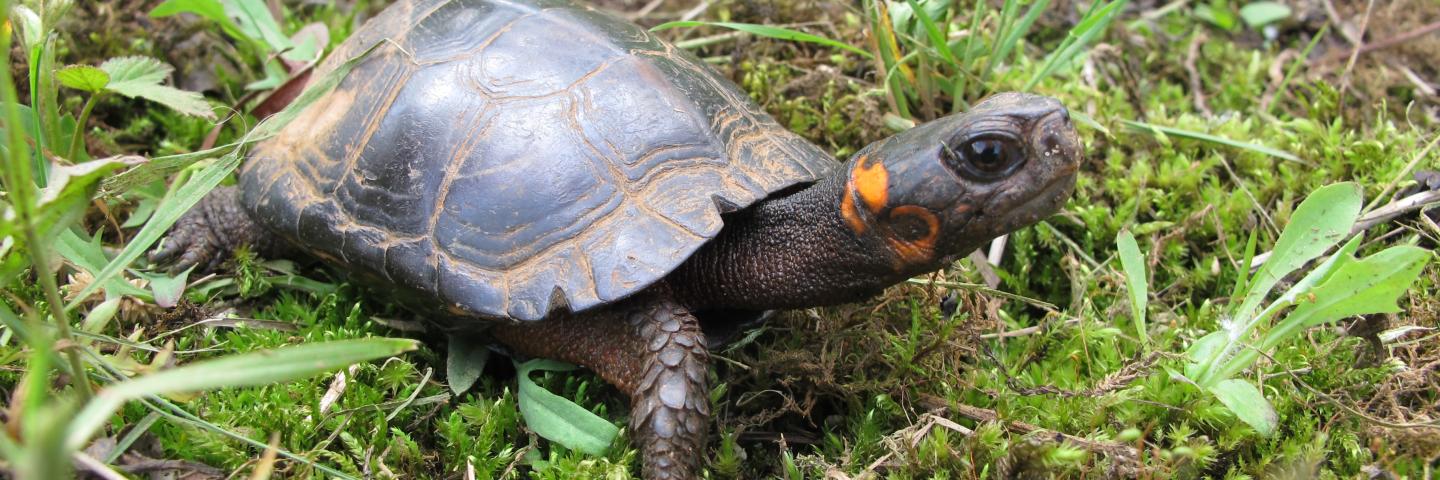
WLFW Projects (State-Identified Projects)
Breadcrumb
- Home
- Programs & Initiatives
- Working Lands for Wildlife (WLFW)
- WLFW Projects (State-Identified Projects)
WLFW has delivered many unprecedented successes over the years, and NRCS has expanded its efforts on additional species and working landscapes.
Projects focus on declining species that have needs compatible with agricultural practices and rural land management and that can benefit from conservation on private lands. Some of the new projects focus on one target species; others focus on a group of species.
Projects
American Black Duck
The American black duck (Anas rubripes) is an iconic species of East coast marshes from New York to Virginia. The loss of coastal habitats because of development, pollution and wetland conversion has contributed to the…
Blanding's Turtle
The Blanding’s turtle (Emydoidea blandingii) inhabits wetland areas of 15 states in the Northeast and Midwest.
Bog Turtle
The tiny bog turtle measures only about four inches. The northern population of bog turtles ranges from New York and western Massachusetts and south to Maryland.
Colorado River Mussels
Six at-risk mussels that inhabit the Colorado River basin in Texas – false spike, Texas fatmucket, golden orb, smooth pimpleback, Texas pimpleback and Texas fawnsfoot – have suffered declines.
Conasauga River Aquatic Species
The Conasauga River in southern Tennessee and northern Georgia is known for its exceptional mussel, snail, crayfish and fish biodiversity.
Cutthroat Trout
Colorado's mountainous terrain kept individual “pods” of cutthroat trout isolated and their gene pools limited from encounters with other trout during their evolution.
Eastern Hellbender
The Eastern hellbender (Cryptobranchus alleganiensis) sometimes referred to as “mud devil”, “devil dog” or “ground puppy” is the largest U.S. salamander with some reaching a weight of more than 2 pounds and extending an…
Hawaiian Nene
The official bird of Hawaii, the nene is found in the wild on the islands of Oahu, Maui, Kauai, Molokai and Hawaii.
Kenai Peninsula Salmon
Salmon are anadromous, which means they divide their lives between freshwater and the ocean. This annual return of salmon to freshwater is economically and culturally important to Alaska.
Louisiana Pine Snake
Considered to be one of the rarest snakes in North America, The Louisiana pine snake (Pituophis ruthveni) calls the lush Longleaf pine savannas of west Louisiana and east Texas home.
Northeast Turtles
The wetlands of the Northeast are home to a variety of wildlife, including the rare Blandings turtle (Emydoidea blandingii), wood turtle (Glyptemys insculpta) and spotted turtle (Clemmys guttata). All three of these turtles…
Northern Bobwhite
The northern bobwhite (Colinus virginianus) is often referred to as an “edge” species, seeking habitat where crop fields intersect with woodlands, pastures and old fields.
Northern Plains Grassland
The Northern Great Plains landscape is vast, spanning more than 180 million acres. Crossing multiple states in North America and parts of Canada, the Northern Great Plains is known for its lush grasslands that are home to a…
Sandhills
The Sandhills landscape of Nebraska is speckled with lakes, wetlands, wet meadows and spring-fed streams.
Shorebirds of Louisiana Wetlands
Birds like the lesser yellowlegs (Tringa flavipes), buff-breasted sandpiper (Calidris subruficollis), stilt sandpiper (Calidris himantopus) and short-billed dowitcher (Limnodromus griseus) use Louisiana’s wetlands as pit…
Yazoo Darter
The Yazoo darter (Etheostoma raneyi) is a small fish that is found only in two watersheds – the Little Tallahatchie and Yocona River watersheds in northern Mississippi.


